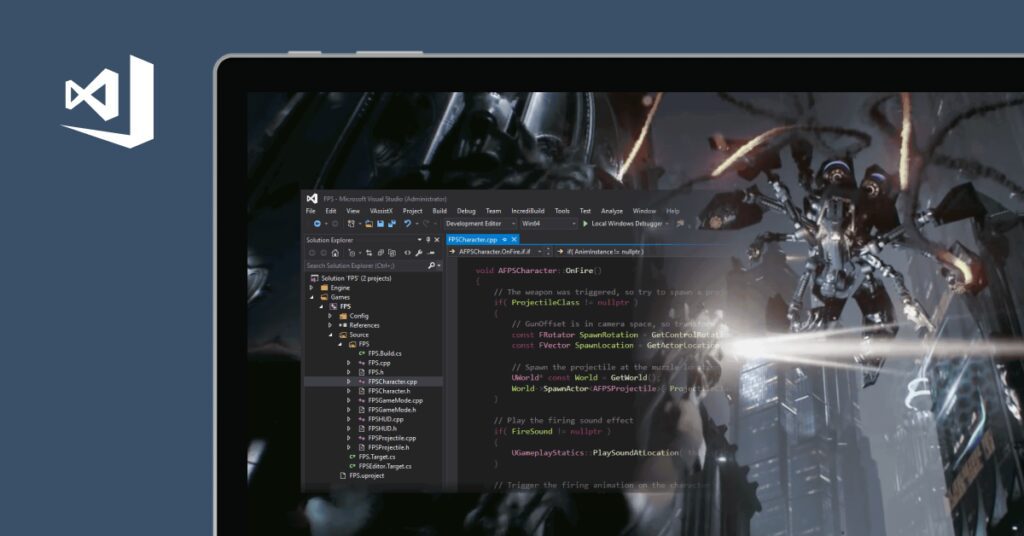Game development involves a complex process that requires creative and technical professionals to work together from concept to release. There are several key stages involved in game development, including concept planning, design, development, testing, and release. Tools such as game engines, graphic design software, audio software, programming languages, and bug tracking software are critical in creating an engaging gaming experience. Techniques like Agile methodology, User Experience (UX) design, game testing, and localization are also used by game developers to create successful games. By using these tools and techniques, developers can create a robust and enjoyable gaming experience for players.
Behind the Scenes of Game Development: A Look at the Tools and Techniques Used by Game Developers
Introduction
Game development is a complex process that involves teams of creative and technical professionals working together to create games that capture the imagination of players. The process involves multiple stages, from concept to design, from coding to testing, and finally to release. This article provides an insight into the process of game development, exploring the tools and techniques used by game developers.
The Game Development Cycle
The game development cycle involves several key stages, each of which is critical in the creation of a successful game. These stages are:
1. Concept
The first stage of game development is concept planning. Designers brainstorm, create sketches, and come up with rough ideas for the game. This phase is crucial since it dictates the direction of the game.
2. Design
Once the game concept takes shape, the designers convert it into a rough design, which includes game mechanics, interactions, and rules. The design document also includes details about the game’s characters, story, and environment.
3. Development
With the game design finalized, it’s time for the developers to breathe life into the game through coding. Various software languages such as C++, Java, or Unity are used to create the game’s functioning.
4. Testing
The game is tested by a team of testers to identify any bugs, glitches, or issues that could hinder the overall gameplay experience. This stage is crucial as it helps to detect and fix any defects in the game.
5. Release
The final stage involves game deployment for public use after the developers fix any issues found during the testing phase. The game is finally released to the public.
The Tools of Game Development
Game development requires several critical tools and platforms to create engaging gameplay experiences. Some of the most prominent tools used in the game’s creation are:
1. Game Engines
Game engines, such as Unreal Engine or Unity, are the foundation of the game creation process since they provide the framework on which the game is built. These engines allow developers to build, design, and produce games across multiple platforms, such as PCs, consoles, and mobile devices.
2. Graphic Design Software
Graphic design software, like Photoshop or Adobe Illustrator, is used to create the game’s visual assets, including textures, backgrounds, and characters. Game artists use 3D modeling software, such as Blender or Maya, to design the game’s visual elements.
3. Audio Software
Game sound designers create sound effects and background music using applications such as FMOD and Wwise. These software tools help designers add realistic sound effects, music, or voice-overs to enhance the overall gaming experience.
4. Programing Languages
Game programmers use programming languages such as C++, Java, Python, and other scripting languages to write the code for the game. Programmers can customize game engines and implement game design elements through programming and scripting.
5. Bug Tracking Software
Game developers use bug tracking software like JIRA or Bugzilla to identify, manage, and resolve game defects. By submitting bug reports, developers can fix the issues before the final release of the game.
Game Development Techniques
Several techniques help to make game development successful. Game developers use these techniques to create a robust and engaging gaming experience. Some essential game development techniques include:
1. Agile Methodology
Agile development is an iterative process that focuses on delivering the game incrementally. In this process, developers work in short sprints to ensure that the game is developed efficiently and effectively.
2. User Experience (UX) Design
UX design involves designing the game interface, such as the menu, controls, and overall user experience, and ensuring the game is accessible, easy to use, and enjoyable.
3. Game Testing
Testing is an essential part of the game development cycle as it allows developers to detect any errors or flaws in the game. By testing, developers can identify and fix any game defects.
4. Localization
Localization includes translating the game text and adapting the game to fit specific cultures and regions. This process involves adapting elements of the game, such as character languages, settings, and cultural references, which create a more rewarding gaming experience.
Conclusion
Game development is a complex and exciting process that involves several stages, tools, and techniques. The process is critical in creating a successful game that engages and entertains players. Developers use various software tools, such as game engines, graphic design software, audio software, bug tracking software, and languages like C++ and Python, to bring their projects to life. By using agile methodology, UX design, game testing, and localization, developers can create a robust and enjoyable gaming experience, keeping players engaged and coming back for more.
